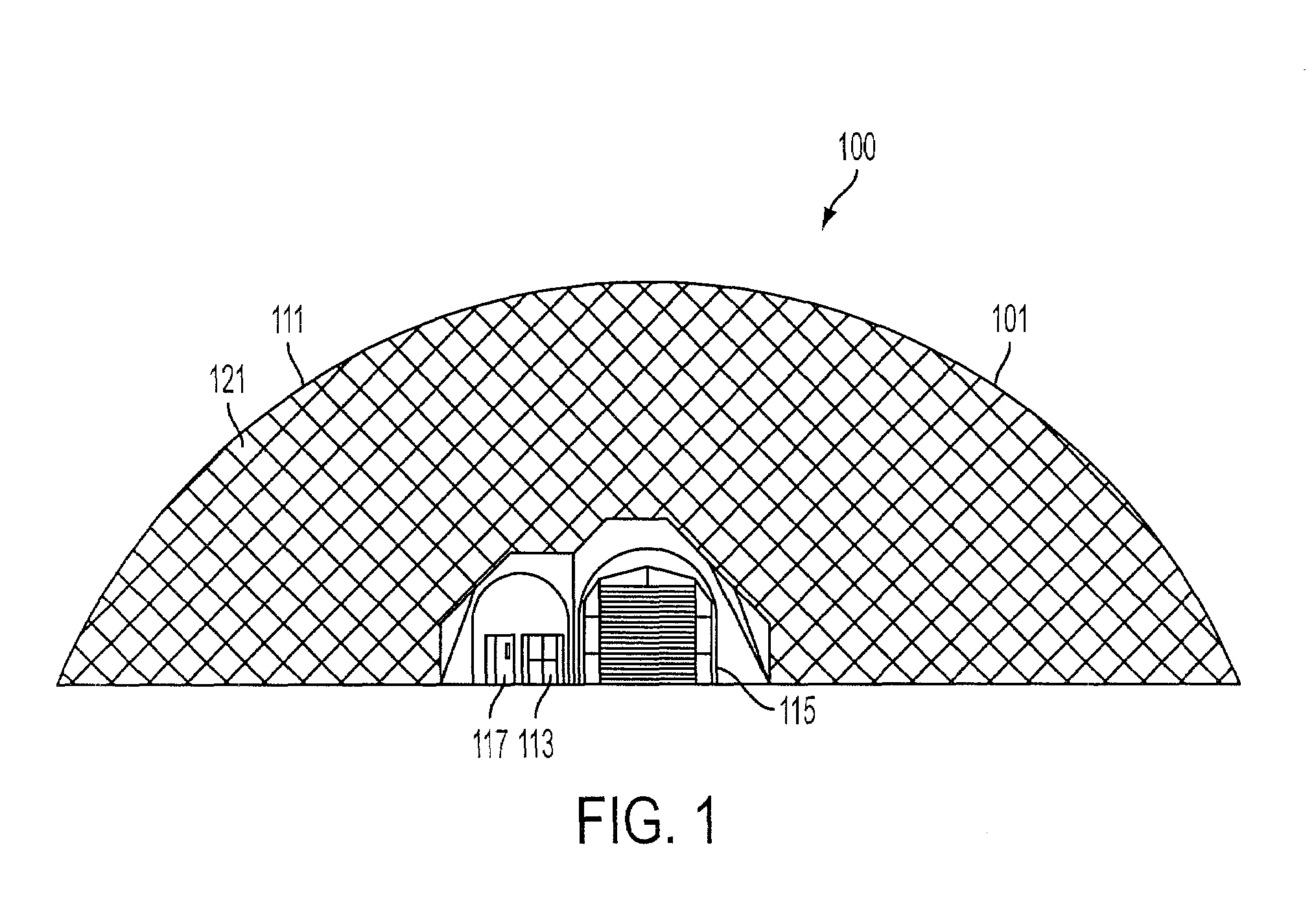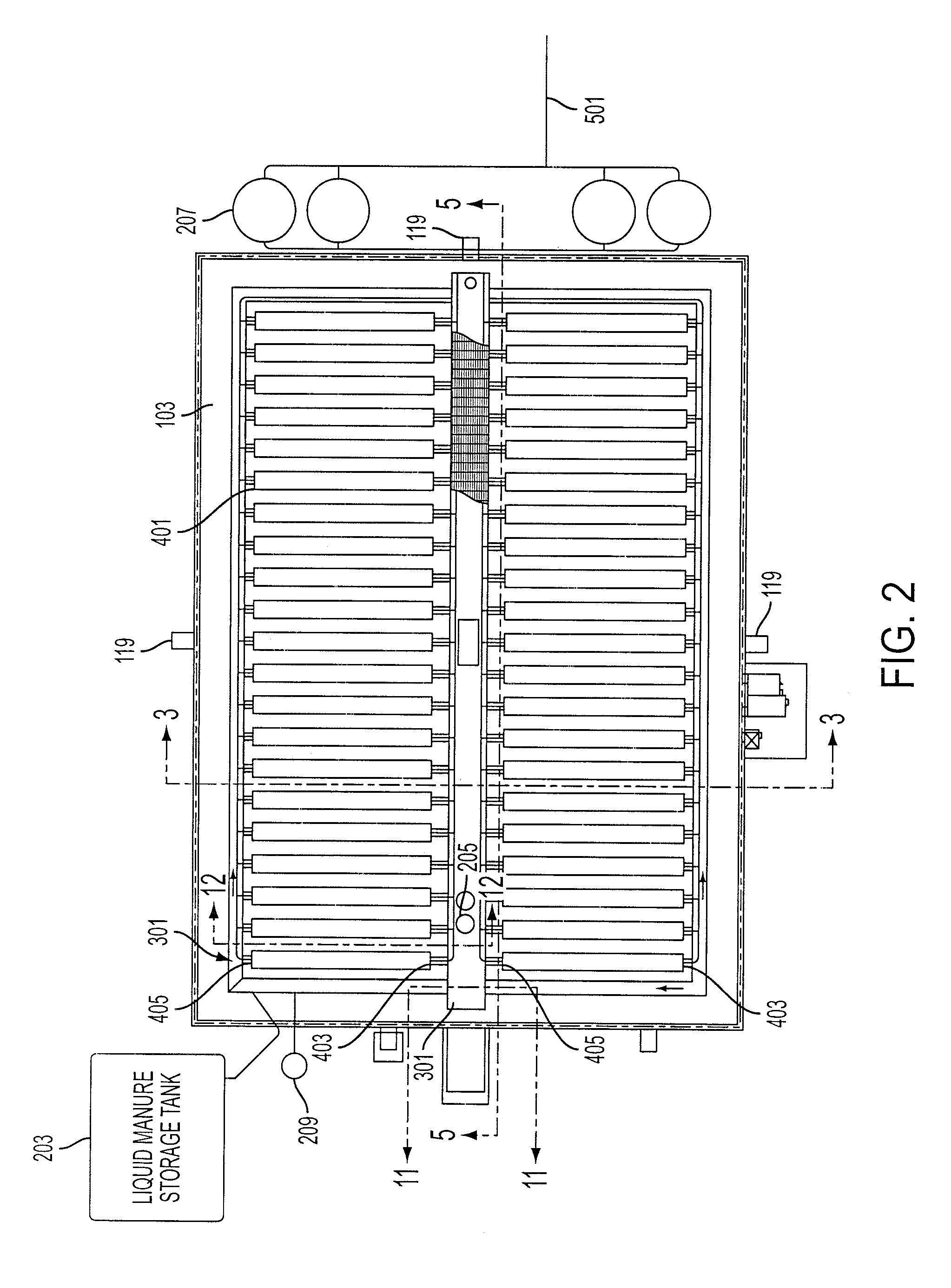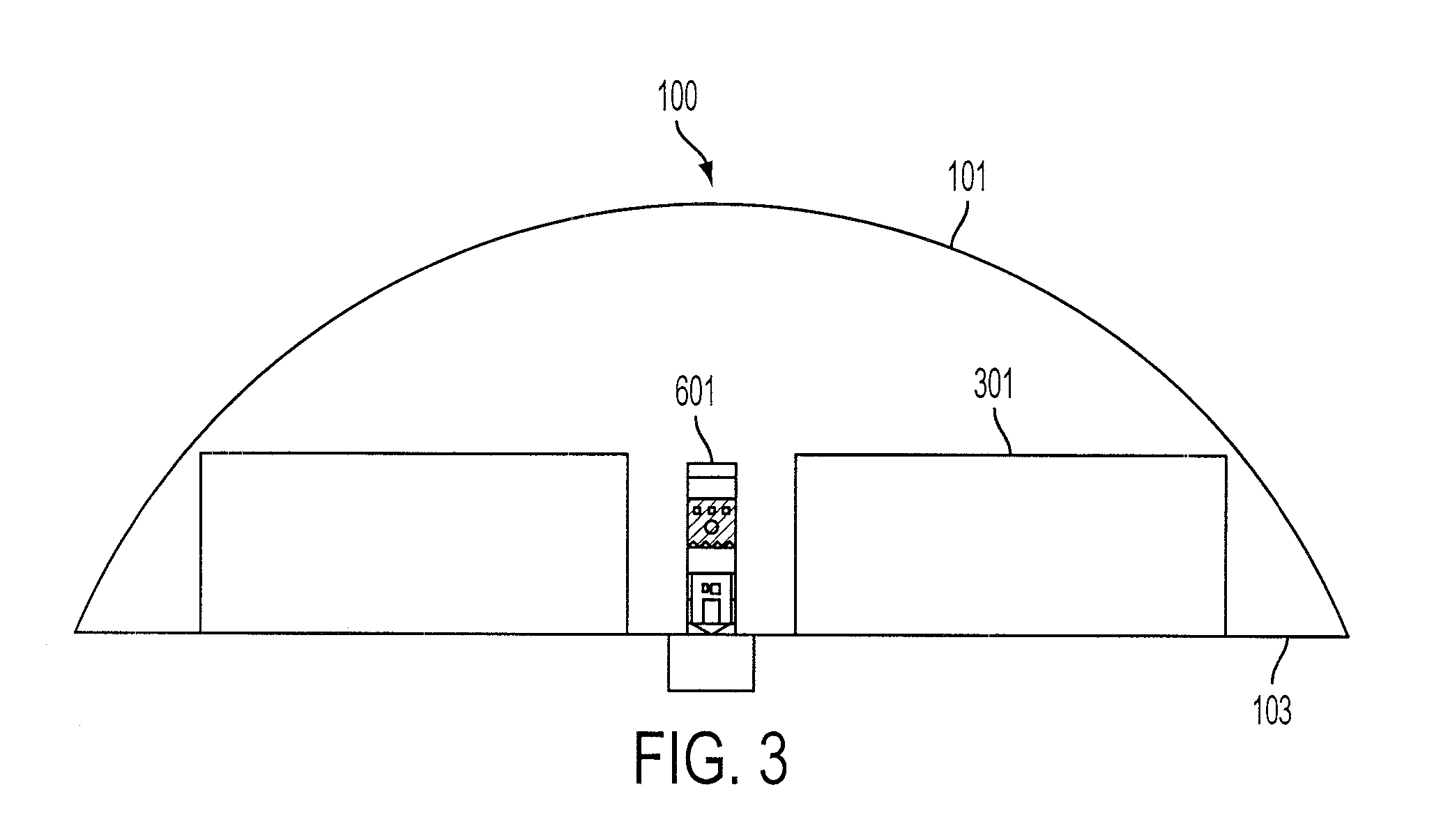Hydroponic growing enclosure and method for growing, harvesting, processing and distributing algae, related microorganisms and their by products
a technology of hydroponic growing and enclosure, which is applied in the direction of microorganisms, specific use bioreactors/fermenters, and after-treatment of biomass, etc., can solve the problems of undesirable emissions of motor fuel, gasoline engines can also have trouble with lighter ethanol materials, and both fuels have one significant shortfall
- Summary
- Abstract
- Description
- Claims
- Application Information
AI Technical Summary
Benefits of technology
Problems solved by technology
Method used
Image
Examples
Embodiment Construction
)
[0057]Throughout this disclosure, the microorganisms being described will be referred to as algae. This is to provide for an exemplary organism. As would be understood by one of ordinary skill in the art, the discussion of growing algae can be applied, without undue experimentation, to the growing of Cyanobacteria or other similar microorganisms. Further, the systems and methods discussed herein do not provide for any particular type(s) of algae to be grown and harvested. This is because it is expected that any desired algae(s) may be grown, harvested and processed, and by products distributed.
[0058]FIGS. 1 through 5 provide various views of a structure (101) and growing enclosure (100) which may be utilized in an embodiment of the invention, generally comprising five main components which relate to general aspects of the operation of the enclosure (100) in growing of the algae. The primary component is a housing structure (101) which serves to isolate the algae and growth process ...
PUM
| Property | Measurement | Unit |
|---|---|---|
| temperature | aaaaa | aaaaa |
| temperature | aaaaa | aaaaa |
| angle | aaaaa | aaaaa |
Abstract
Description
Claims
Application Information
 Login to View More
Login to View More - R&D
- Intellectual Property
- Life Sciences
- Materials
- Tech Scout
- Unparalleled Data Quality
- Higher Quality Content
- 60% Fewer Hallucinations
Browse by: Latest US Patents, China's latest patents, Technical Efficacy Thesaurus, Application Domain, Technology Topic, Popular Technical Reports.
© 2025 PatSnap. All rights reserved.Legal|Privacy policy|Modern Slavery Act Transparency Statement|Sitemap|About US| Contact US: help@patsnap.com



